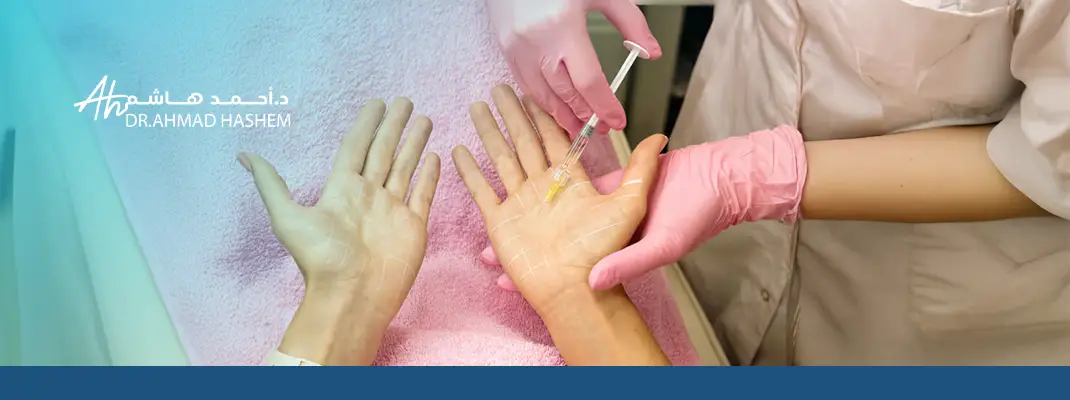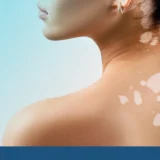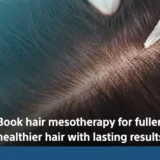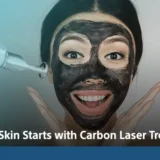Excessive sweating, known medically as hyperhidrosis can be an overwhelming and embarrassing condition that affects daily life and confidence. Whether it’s underarm perspiration, sweaty hands or constant moisture on your feet or face, the struggle is real but manageable.
In this article, we’ll explore the causes, most affected areas, proven methods to control hyperhidrosis and discover why Dr. Ahmad Hashem’s clinic is recognized as a top destination for those seeking relief from persistent sweating.
Table of Contents
What Is Hyperhidrosis ?
Hyperhidrosis is a medical condition in which the body produces an excessive amount of sweat that goes far beyond what’s needed to regulate body temperature. This excessive sweating can occur even when you’re at rest, in cool environments or without any apparent trigger like heat or physical activity.
people with hyperhidrosis have overactive sweat glands that produce more sweat than necessary. This can result in soaked clothing, dripping hands and frequent discomfort and leading to social anxiety, embarrassment, and interference with everyday tasks.
Main Causes of Excessive Sweating
| Cause Type | Description | Common Triggers/Areas Affected |
| Primary Hyperhidrosis | Overactive nerves overstimulate sweat glands without a medical cause. | Localized areas like hands, feet, underarms and face. |
| Often hereditary and starts in childhood or adolescence. | Occurs during the day, not during sleep. | |
| Secondary Hyperhidrosis | Caused by an underlying health condition or medication side effects. | Generalized sweating across the body, often during both day and night. |
| May be linked to conditions like diabetes, hyperthyroidism, infections or menopause. | Also caused by medications such as antidepressants or pain relievers. | |
| Emotional/Environmental | Sweat triggered by psychological or lifestyle factors. | Stress, anxiety, spicy foods, caffeine, alcohol or tight clothing. |
Treatment Techniques: Botox, Iontophoresis, and Antiperspirants
1. Botox Injections for Hyperhidrosis
- How It Works: Botox, is a protein that blocks the chemical signals from the nerves that trigger sweat glands. When injected into the affected area (commonly underarms, hands or feet), it temporarily stops excessive sweating by preventing the sweat glands from activating.
- Best For: Primary focal hyperhidrosis particularly in areas like underarms, hands, feet and face.
2. Iontophoresis
- How It Works: Iontophoresis is a non-invasive procedure in which a mild electrical current is passed through water to block the sweat glands. The hands or feet are typically submerged in a tray of water, and a current is applied for about 20 to 30 minutes.
- Best For: Palmar (hands) and plantar (feet) hyperhidrosis.
3. Topical Antiperspirants
- How It Works: The most common topical treatment for hyperhidrosis is antiperspirants containing aluminum chloride. This active ingredient blocks the sweat ducts and prevents the release of sweat. These antiperspirants are typically stronger than regular over-the-counter versions.
- Best For: Mild to moderate hyperhidrosis, particularly in areas such as the underarms, palms or feet.
How Effective Is Botox for Hyperhidrosis?
Botox is a highly effective hyperhidrosis treatment. It works by blocking the nerve signals that trigger sweat glands, significantly reducing sweat production by 82–87% in underarms and 50–75% in hands and feet. The results typically last between 6 to 8 months, after which repeat injections are needed. Improvements can be noticed within 2 to 4 days, with full results visible after up to 2 weeks.
While Botox is generally well-tolerated, common side effects include mild pain or swelling at the injection site, and temporary muscle weakness, particularly in the hands. This treatment is particularly beneficial for people with primary focal hyperhidrosis who have not responded well to topical treatments or prefer a non-surgical approach.
Read More: Gummy Smile Botox: Real Results or Hype?
What Areas Commonly Affected
- Underarms leading to discomfort and embarrassment.
- Hands Affects daily tasks and causes social anxiety.
- Feet Causes dampness, odors and risk of infections.
- Face Visible sweating on the forehead, scalp and upper lip.
- Groin Area Less common but leads to discomfort and irritation.
- Back and Chest Occasional sweating can cause damp clothing and skin irritation.

Lifestyle Tips to Manage Sweating
- Use Clinical-Strength Antiperspirants Apply at night for better results.
- Choose loose, cotton clothes to reduce sweat buildup.
- Drink plenty of water and avoid caffeine and alcohol.
- Shower regularly and keep affected areas dry.
- Wear moisture-wicking fabrics, especially for exercise.
- Use relaxation techniques like yoga or deep breathing.
- Avoid spicy foods and hot drinks that trigger sweating.
- Wear pads or liners to absorb moisture.
- Wear Antibacterial Clothing Helps reduce odors and bacterial growth.
- Explore medical treatments like Botox or medications if necessary.
- Read More: Botox Hair Treatment Guide: Benefits ,Results
Why Dr. Ahmed Hashem’s Clinic the best for Hyperhidrosis Treatment
Dr. Ahmed Hashem’s clinic is renowned for providing exceptional care for individuals dealing with hyperhidrosis. With extensive experience in dermatology, Dr.ahmad Hashem offers personalized hyperhidrosis treatment plans tailored to each patient’s unique needs. The clinic is equipped with state-of-the-art technology, ensuring that treatments.
Every individual is given the time and attention they need, with thorough evaluations to create a treatment plan that aligns with their lifestyle and symptoms. The clinic’s success rate speaks volumes, with many satisfied patients experiencing significant improvements in their condition.
Take the first step toward hyperhidrosis treatment and book your consultation with Dr. Ahmad Hashem today and discover how we can help you live sweat-free.
د.أحمد هاشم
استشاري جلدية وتجميل وليزر وزراعة الشعر وطب ضد الشيخوخة، ومدرب للأطباء على البوتوكس والفيلر والشد بالخيوط









